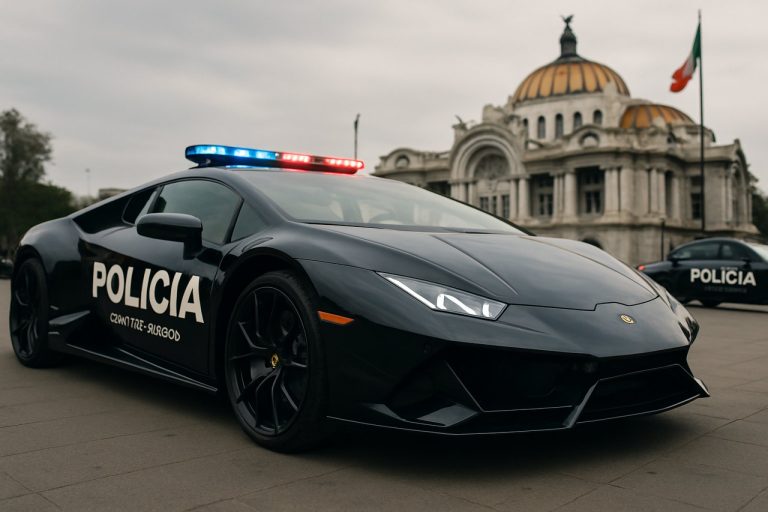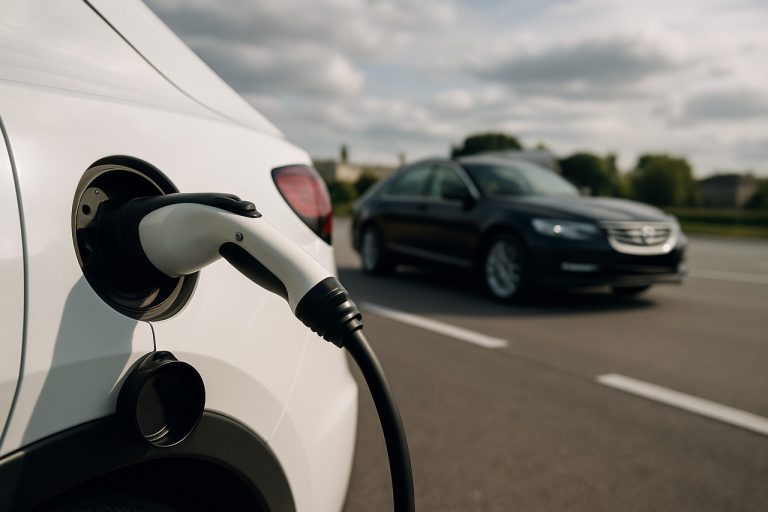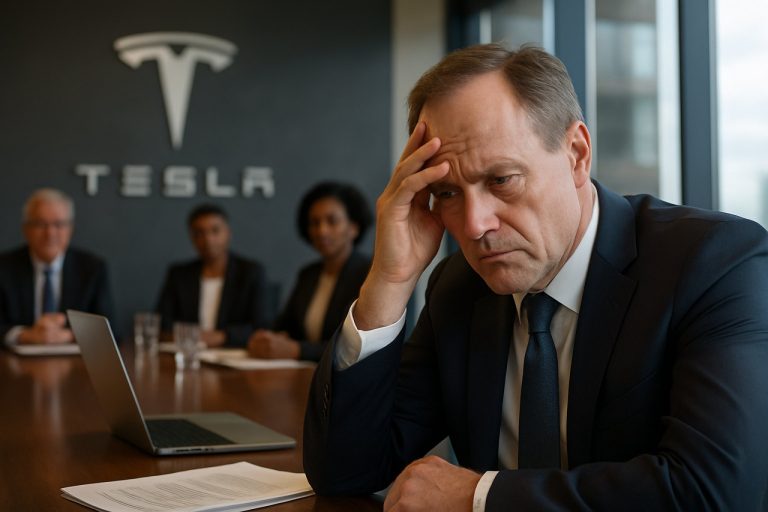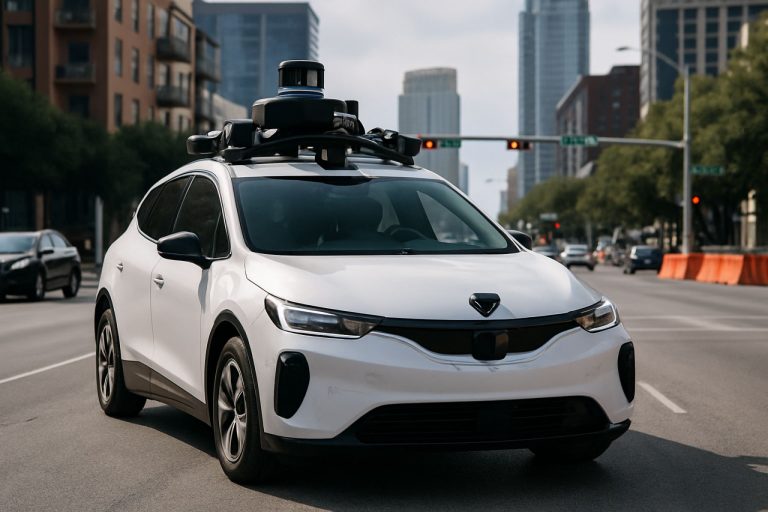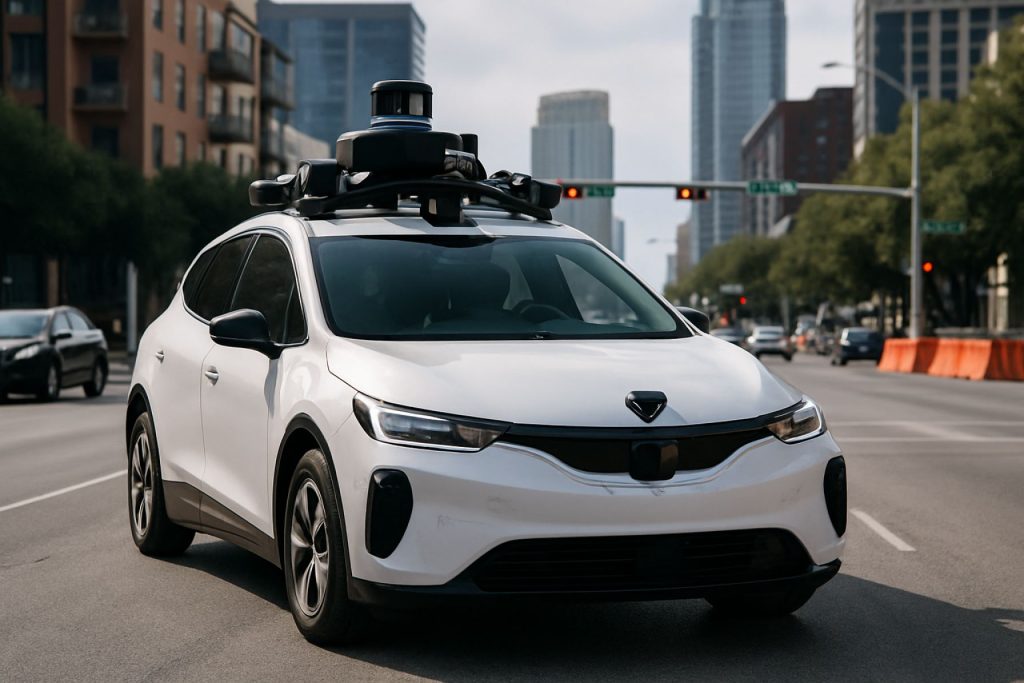
- Tesla is launching its first driverless robotaxi service in Austin, signaling a major advancement in electric vehicles and autonomous technology.
- The initial rollout features Model Y SUVs operating without safety drivers, with plans to expand to one thousand autonomous vehicles by fall.
- The upcoming Cybercab, a two-seater EV with no steering wheel or pedals, represents a bold step toward fully autonomous urban transportation.
- Austin is at the forefront of the robotaxi revolution, with competitors like Waymo also testing self-driving vehicles in the city.
- Tesla’s rapid timeline emphasizes the crucial role of public trust, regulatory readiness, and societal adaptation as autonomous vehicles become reality.
Electric vehicles have always promised a revolution, but Tesla’s latest move in Austin signals a seismic shift — not just for cars, but for cities, commutes, and technology itself.
Early summer heat shimmers off Austin’s streets, but beneath the surface, something futuristic stirs. Tesla, renowned EV visionary, is primed to launch its first robotaxi service, a milestone that places driverless ambitions at the heart of American daily life. The company’s CEO, Elon Musk, has cast bold visions before, but this chapter weds artificial intelligence with wheels in a way Austin has yet to see.
Last week, Tesla set its Model Y SUVs loose — driverless — on public roads. There were no hands on the wheel, no feet on the pedals. Only a silent Tesla engineer in the passenger seat, eyes on the dashboard, watching as software made history. For months, the city has watched as cars with safety drivers mapped every curve and intersection, but now, the robotaxis have shaken off human support.
The plan is as daring as it is ambitious: roll out a fleet of around ten autonomous vehicles this June, quickly scaling to a thousand by fall. It’s an audacious step toward Musk’s stated goal — to make robotaxis the centerpiece of Tesla’s core business, eclipsing the manufacturing of cars themselves.
But these aren’t just any cabs. The next phase will see the arrival of the Cybercab, a two-seater EV stripped of steering wheel and pedals — a living room on wheels, more spaceship than sedan. Tesla teased this prototype at a California event last year, though actual rides remained confined to private grounds, sidestepping regulatory entanglements.
Austin buzzes with competition. Companies like Waymo, the self-driving arm of Google’s parent Alphabet, have already turned the city into a testing ground, putting dozens of unmanned vehicles through their paces. Austin, with its vibrant tech scene and flexible local policies, now stands as a nucleus of the global robotaxi experiment.
Musk has hinted that the leap to true driverless fleets will happen not in years, but in months — a timeline that captures his characteristic impatience, but also frames a stark question: are cities and citizens ready?
Key Takeaway: Tesla’s high-wire act in Austin isn’t simply about ferrying passengers without drivers. It’s a test of public trust in AI, regulatory agility, and the pace at which societies can—or can’t—adapt to the future. As robotaxis silently glide down Austin’s avenues, the world watches: one city’s experiment could redraw the map for urban living everywhere.
Tesla’s Robotaxi Revolution: What Austin’s Bold Move Means for the Future of Transportation
Introduction
Tesla’s impending robotaxi launch in Austin is more than just another step in electric vehicle (EV) innovation—it’s a full-scale experiment set to disrupt urban mobility, challenge regulatory frameworks, and redefine how cities and people interact with transportation technology. Below, we’ll uncover additional facts, industry perspectives, market analysis, pressing questions, and actionable takeaways that build on the story you’ve read.
—
Additional Facts & Insights
1. How Tesla’s Robotaxi Service Works
– Full Autonomy: Tesla vehicles in Austin are operating under Full Self-Driving (FSD) beta software, which uses advanced AI and sensor fusion to perceive and navigate complex city conditions without human intervention.
– Cybercab Details: The upcoming Cybercab will lack traditional controls (steering wheel, pedals), and is rumored to feature large infotainment screens, a minimalist interior, and advanced speech-driven controls.
– Ownership Model: Tesla aims for an Uber-like service but using a purely autonomous fleet. Future plans hint at privately owned Teslas participating as on-demand robotaxis, creating a passive income stream for owners.
– See more at Tesla.
2. Industry Trends & Market Forecasts
– Global Robotaxi Market: According to Allied Market Research, the global robotaxi market could surpass $39 billion by 2030, with CAGR over 60% from 2024 onwards.
– Urban Impact: McKinsey estimates widespread adoption could reduce city car ownership rates by up to 30% and lower traffic fatalities.
– Competitors: Companies such as Waymo, Cruise (GM), and Baidu (in China) are in similar pilot phases, especially in tech-centric cities like Austin, Phoenix, and San Francisco.
3. Comparisons & Reviews
– Waymo vs. Tesla: Waymo favors lidar and a cautious, incremental rollout; Tesla relies solely on cameras and deep neural nets, betting on rapid deployment and scalability.
– Pricing: Comparable driverless ride fares (Waymo, Cruise) are already competitive with traditional rideshares. Tesla is expected to undercut these with minimal labor costs and fleet ownership advantages.
4. Challenges, Controversies & Limitations
– Regulation: The US lacks a unified federal framework for autonomous vehicles. Texas offers relatively permissive laws, but the NHTSA (National Highway Traffic Safety Administration) still scrutinizes safety records and data.
– Safety: Critics cite accidents involving Tesla’s FSD and competing AVs. Tesla claims improved safety, but independent, peer-reviewed road safety data is limited.
– Public Trust: Surveys indicate over 40% of US respondents remain skeptical about autonomous vehicles (Morning Consult, 2024).
– Sustainability: Newer EV architectures, increased ride-sharing, and planned use of renewable energy aim to curb environmental impact, though battery production and energy sourcing remain concerns.
5. Real-World Use Cases & Life Hacks
– Commuter Benefits: Lower commuter stress, more productive travel time, and reduced parking needs.
– City Planning: Opportunity for cities to reclaim parking real estate for green spaces or affordable housing.
– Accessibility: Mobility solutions for non-drivers, elderly, and disabled.
—
Frequently Asked Questions
Q: Are robotaxis legal and safe in Austin?
Yes, Austin allows AV pilots, but oversight is evolving. Tesla promises robust safety monitoring during rollout, and vehicles are collecting millions of miles of real-world data for continuous improvements.
Q: How do Tesla robotaxis navigate without lidar?
Relying on cameras and neural networks, Tesla claims its “vision-only” approach is more scalable and cost-effective, though this is debated in the autonomous vehicle community.
Q: Will robotaxis replace public transit?
Not entirely—they’re likely to complement buses and trains by filling “first-mile/last-mile” gaps and urban/suburban ride demand.
Q: How much will rides cost?
Details TBD, but Elon Musk has said Tesla robotaxi fares may be lower than current on-demand ridesharing—a potential $0.18/mile vs. Uber’s $2+/mile averages (2023).
—
Actionable Tips & Quick Recommendations
– Try a Ride: If you live in Austin, look for local robotaxi pilot apps or Tesla FSD rideshare signups.
– Stay Informed: Follow updates from the NHTSA and local Austin city council on AV regulations and public town halls.
– Consider Investment: Monitor Tesla’s shift toward mobility services as a core business. Autonomous ride-hailing may boost long-term stock performance.
– Sustainability: Choose robotaxi options that use renewable electricity where available to minimize carbon footprint.
– Urban Living: If you live in a robotaxi pilot city, track how new mobility options might affect housing, commuting, and job access.
—
Conclusion
The Tesla robotaxi launch in Austin is likely to serve as a blueprint for cities worldwide. While opportunities for cleaner, faster, and more affordable urban mobility are immense, real success will depend on regulatory safeguards, public trust, and continued tech refinement. As always with disruptive innovation, the best strategy is to stay informed, stay adaptable, and—if you’re in Austin—maybe be the first to summon your own driverless ride.
Main keywords: Tesla robotaxi, autonomous vehicles, self-driving cars, Austin, electric vehicles, Elon Musk, urban mobility, EV market trends
